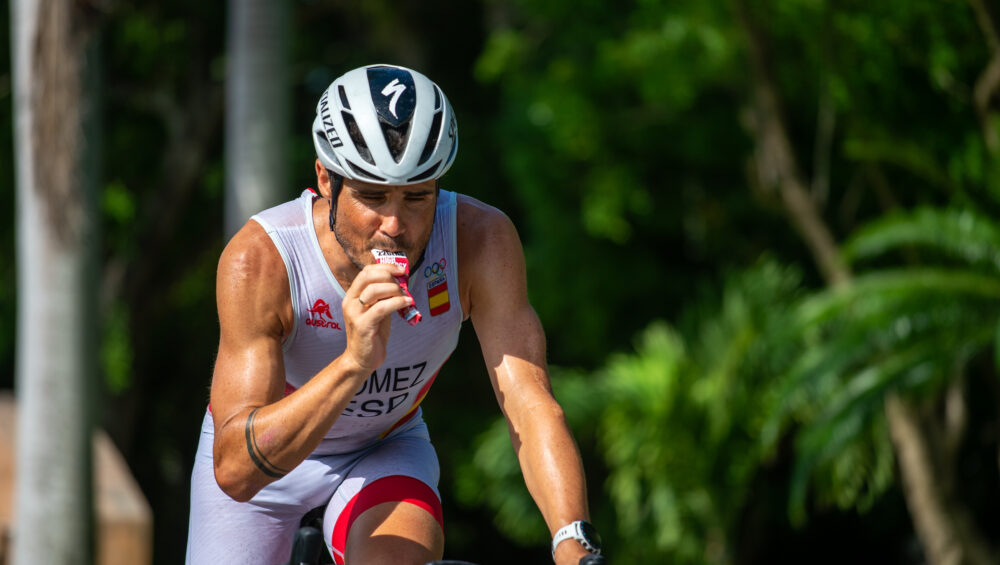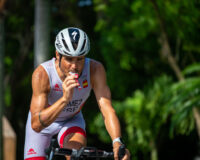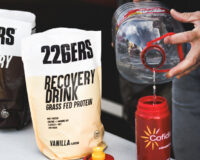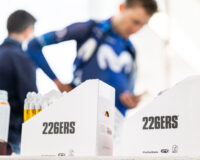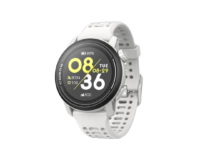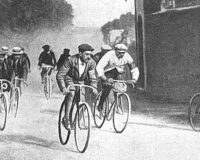In the cycling endurance world, an adequate nutritional plan can make the difference between completing an event successfully or suffering a performance drop due to emptying muscle glycogen stores, the fuel needed for high intensity.
Carbohydrate loading is a very common nutritional strategy used within cycling sports nutrition and other endurance sports, aiming to maximise energy deposits before a race or demanding workout.
How must this carbohydrate load by adjusted according to the race’s time and intensity? Is it the same for a road, mountain bike or gavel event? Is the event’s duration or distance more relevant? Must a carbohydrate load be carried out although the goal of the event is to be a finisher?
This article will review the best nutritional recommendations for cyclists, adapting carbohydrate intake to the kind of event and goal, in order to optimise performance in a safe and effective way.
What’s carbohydrate loading?
Carbohydrate loading is a feeding protocol which intentionally increases the intake of carbohydrates on the days prior to a race. Aim is to maximise cyclists’ carbohydrate load, i.e. filling muscle glycogen stores to their maximum (for physical exercise), and hepatic (to control blood glucose levels).
This glycogen is the main energy source for cycling when prolonged efforts at mid-high intensity are performed, approximately above 70-75% of maximum heart rate or 75-80% of FTP. An adequate amount of stores allows to sustain that intensity longer and delay fatigue, hence improve performance.
How long do glycogen stores last?
Generally speaking and as a reference point, it’s important to know that a cyclist with ‘normal’ levels of glycogen stores is capable of sustaining an intensity close to the anaerobic threshold for 45-60′, which would approximately be 90% of maximum heart rate or 95-100% of FTP. With a carbohydrate load, this time can be increased to 90 minutes.
It’s also important to know that if the intensity increases over these parameters, the carbohydrate duration will decrease and viceversa. Exactly the same as a car’s petrol tank, depending if it’s driven in “eco” or “sport” mode.
Is it necessary for all events?
Not all competitions require the same nutritional strategy. Duration, intensity and type of event determine the need to carry out a carbohydrate load or not.
Following are some different time ranges:
❌ Short events (less than 60 minutes)
Examples: criteriums, short individual time trial, track race.
In these kind of races the normal glycogen stores could be enough if the nutrition has been adequate during the previous days and there’s been a decrease in training work load. Hence, it wouldn’t be necessary to carry out a specific load.
Recommendations:
- 48 hours before: intake 5-6 grams of carbohydrates per kilogram of body weight per day.
- Look after nutrition before a cycling race, having a high carbohydrate meal 2-3 hours before with 2-3 grams of carbohydrates per kilogram of body weight.
✅ Mid events (1 to 3 hours)
Examples: mid distance cyclosportives, MTB half marathons, one day road races.
For these events carbohydrate intake is more relevant, specially if intensity is high for some time, either due to the event’s competitiveness or due to the route’s difficulty, such as overcoming a mountain pass or a steep slope.
Recommendations:
- Standard load: 48-72 hours before, intake 6 to 8 grams of carbohydrates per kilogram of body weight per day.
- Express load: 24-48 hours before, intake 8 to 10 grams of carbohydrates per kilogram of body weight per day.
- Decrease training volume during those days.
- Prioritise food easy to digest: rice, pasta, bread, fruit.
⚡️ Long events (over 3 hours)
Examples: gran fondos, queen mountain stages, stage races, MTB marathons.
The nutrition strategy requires a carbohydrate load before, a nutrition plan during the event and nutritional recovery after it.
Recommendations:
- Standard load: 48-72 hours before, intake 7 to 10 grams of carbohydrates per kilogram of body weight per day.
- Express load: 24-48 hours before, intake 10 to 12 grams of carbohydrates per kilogram of body weight per day.
- Decrease training volume during those days.
- Avoid fat or high in fibre foods that could make digestion difficult.
- Include drinks with electrolytes and carbohydrates such as juices or sports drinks.
Other considerations to optimize carbohydrate loading:
- ☕️ Spread meals throughout the day: Avoid three overly large meals and include snacks in between.
- 🍼 Use gels or drinks: 2 High energy gels ≈ 110 g of carbohydrates = equal to a 150 g portion of pasta.
- ❌ Avoid fatty sauces and heavy meals: Keep your menu simple and “clean.”
- 🏨 Plan your meals when traveling: Choose accommodation that allows you to cook if needed, not just rely on restaurant food.
Summary: Load smart, ride better
Training is only part of the preparation. Proper carbohydrate loading before cycling helps you achieve better results and enjoy your ride without energy shortages.
Whether it’s a short 1-hour ride or a 200 km gran fondo, adjusting your nutrition strategy is a clear key to success in cycling.
Load properly and feel fresh on your ride!
Guillermo Olcina
